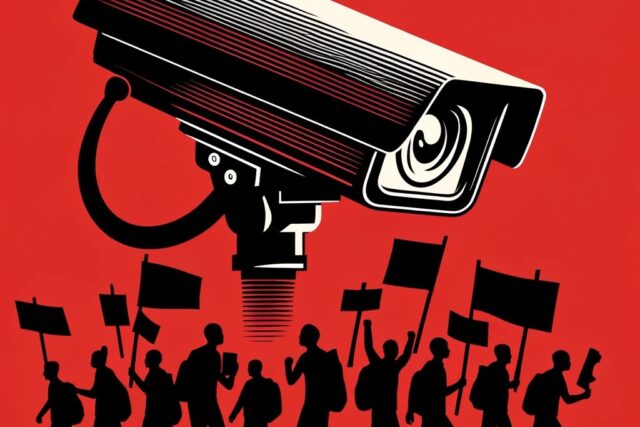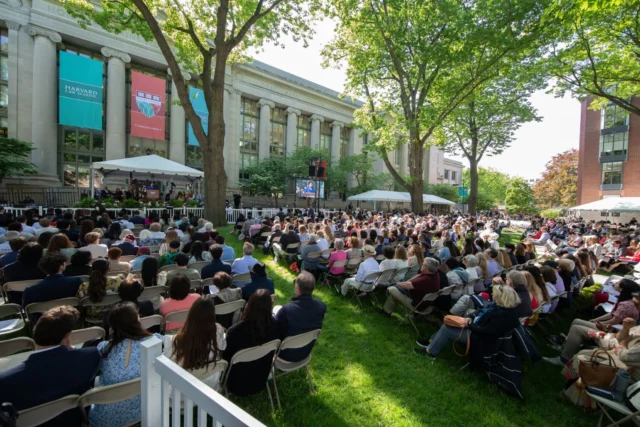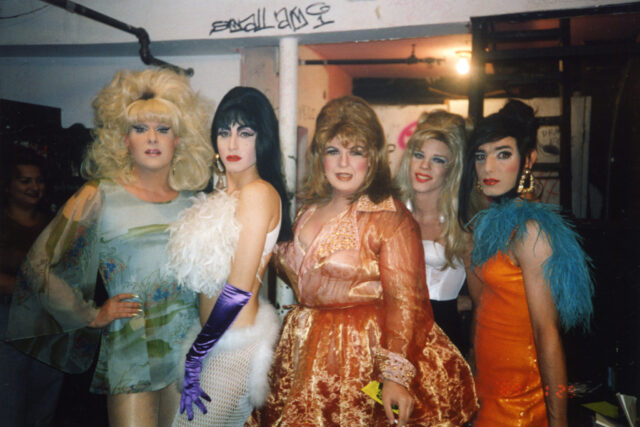The 21st century has seen a proliferation of left social movements in the United States. From Occupy Wall Street to the Sunrise Movement, from the Movement for Black Lives to #MeToo, and from the increase in labor organizing to the insurgent presidential campaigns of Bernie Sanders, those left behind by the current social, political, and economic order have articulated a new sort of politics. As these movements have risen to prominence, they’ve meaningfully influenced the appearance of American politics, changing everything from the language politicians use to the goals they claim to seek. In the legal academic world, left-leaning scholars have even coined a methodology, “movement law”, for scholarship to recognize and engage with these movements out of a spirit of solidarity and accountability.
Corporations have responded to this movement generation as flexibly and forcibly as any American institution. Though many of these movements’ demands are flatly at odds with any continuation of the corporate form, they have nevertheless received significant public support from major corporations and other titans of American capitalism. Corporations are adopting progressive language, re-structuring their workplaces through culturally sensitive HR regimes, and investing in environmental, social, and governance (ESG) funds to outwardly signal their commitment to social justice. The glaring exception to this rule is the labor movement. Corporations may attempt to preempt labor pressure by unilaterally changing their employment terms, but still prefer to dominate incipient labor movements.
But if these movements are focused on disrupting and overturning a status quo built for and by corporations, why are so many corporations concerned with allying with them? Why does it feel like corporations have adapted more quickly and comprehensively to the new activist generation than the democratically controlled institutions and centers of government that are supposed to represent them? And why, even as corporations are so drastically changing how they brand and market themselves, does it feel like the distribution of power in our society has not changed? Perhaps the rise of the “woke corporation” is part of a broader, emerging phenomenon: movement capitalism.
The term “movement capitalism” describes both a process and a model of political engagement. Under movement capitalism, people engage in politics by making intentional, politically-motivated consumer decisions rather than by politically organizing, building movement power, or pursuing other forms of traditional direct action. Through this process, corporate interests can identify outside threats to the world they’ve created and transform them into marketing opportunities to further establish their legitimacy.
But corporations can’t do it alone: the only thing that makes movement capitalism possible is that people have come to expect that corporations will involve themselves in politics. Because corporations control and mediate so much of our lives, many feel that change must go through corporations in order to be truly effective. In addition, corporations are identifiable in a way that democratic institutions don’t always seem to be: you vote once every few years, but you decide where to shop every day. One of the many problems with political action in corporate spaces, though, is that activists have very few tools to pressure businesses other than shifting where they spend their money. Consumers can boycott businesses, of course, but there will always be another corporation waiting to scoop up their withheld dollars.
Under movement capitalism, people engage in politics by making intentional, politically-motivated consumer decisions rather than by politically organizing, building movement power, or pursuing other forms of traditional direct action.
Though this trend can take many forms, it’s helpful to sketch a general overview. Corporations, surveying the business climate, identify an emergent social movement that might either threaten business or present opportunities. Many individual corporate decisionmakers may even, at some level, feel compelled by particular components of this movement’s central narrative. You might imagine specific corporate executives who feel strongly about issues of anti-Black police violence or workplace sexual assault and therefore hope for their workplace to take some sort of action in these areas.
When movements rise in prominence, corporate decisionmakers face a decision. Depending on the level of public embrace of the movement in question, executives may feel pressure from their consumer base to take a stance. The flip side of that coin—whether for corporations that actively depend on the use of marketing to sell their products to consumers or brands that could use a boost in their perception—is that emergent social movements present unique marketing opportunities. By cosigning a particular social movement, a corporation signals to politically-aligned consumers that it is trustworthy. For corporations like Nike who intentionally seek out touchpoints in the culture wars to center in their advertisements, these decisions can be outrageously profitable—like when their valuation jumped $6 billion in the wake of their controversial Colin Kaepernick ad campaign.
At this point of cosigning, corporations can also tailor the message of whatever politics they are endorsing. For instance, Amazon can shy away from demanding police abolition while still upholding that “Black Lives Matter.” Corporations will identify and incorporate whatever strand of the movement’s politics are most compatible with an HR program that appears to meaningfully alter internal practices while nevertheless continuing—and sometimes streamlining—their ultimate profit mandate. Finally, as corporations begin to hire younger, savvier people who are more adept at identifying emergent trends and movements, this process becomes more efficient and far reaching.
It’s not only corporations who participate in movement capitalism. In fact, it is only through the role that consumers play in this cycle that the corporate behavior described above is made possible and effective. The corporate capture of movements is a cycle, not a linear process, made possible by mass audiences who have learned to engage with politics as consumers, not participants. Corporations can only use movements to brand their products because there is a market of people who understand participating in movements as a way of branding themselves. This game is a two-way street, a complete ecosystem.
Despite the recent surge in movements for social justice, the last 40 years have seen the average American grow further distant from political power. Unions have been decimated, public space is increasingly replaced by private institutions, and powerful individuals, corporations, and interests have consolidated political influence and wealth alike. The public’s distance from political power, however, has not made us any less interested in “politics” as a sort of spectacle.
The further distanced people are from exercising actual political power through local organizing and meaningful electoral choices, the more they are relegated to engage in politics through traditional and social media––both of which exist to serve corporate interests. As corporations have purchased independent media outlets and ramped up their own coverage, it is increasingly difficult to get news outside of sources operating on behalf of corporate interests and in pursuit of profits. This corporate control and pursuit of profit creates a media environment that prioritizes outrage over information and addictive stories over those that challenge power. In service of these goals, media corporations tend to shift attention away from local politics, where people theoretically can exercise more influence and control, and into national politics and generalized culture war issues. Many Americans likely think far more about Mitch McConnell or Nancy Pelosi than their own elected representatives, and many feel far more attuned to whether or not Critical Race Theory is being taught in a county in Virginia than they are with how their own school district operates. This combination of distance and outrage, a simultaneous awareness and powerlessness, is only worsened by social media, which trades on these exact impulses. Many feel more preoccupied with politics and aware of the world’s problems than ever, but so far away from these problems that all they can do is tweet.
Movement capitalism authorizes this sort of consumption and self-branding as a valid method of political participation, which, as a result, necessarily centers the corporate marketplace as a legitimate site of political action.
For the purposes of movement capitalism, this post-1980 shift in political orientation is specifically noteworthy among American liberals, who are far more likely to be allies of movements for social justice and transformation than conservatives. For the past 40 years, American liberals and the Democratic Party have prioritized a kind of expert-driven politics that disdains popular decision-making. Liberals tend to consider themselves socially refined and sophisticated, holding faith in institutions that appear to allocate power and responsibility based on merit, qualification, and expertise. This institutional trust in many ways justifies the distance many liberals likely feel from actual political power: it’s not a problem that you’re not making any decisions, because that’s for the experts. It is this faith, both in institutions and experts, that has transformed politics for American liberals into a “spectator sport”; their side is clear and their support is unwavering, but they feel neither the need for systemic transformation nor the responsibility to take any direct action. The job under this political orientation is to get the experts into power and then cheer from the sidelines.
As a result, social movements face a serious problem. In order to invest radical demands with the legitimacy of a popular movement, social justice organizers must activate a population that feels comfortable deactivated. Movement capitalism allows a tempting, yet ultimately unacceptable workaround to this issue. Movement capitalism translates the politics of radical, left-wing movements into a language legible to the American liberals who are conditioned to express themselves through self-branding and targeted consumption. In so doing, movement capitalism authorizes this sort of consumption and self-branding as a valid method of political participation, which, as a result, necessarily centers the corporate marketplace as a legitimate site of political action.
In this way, the two functions of the movement capitalist cycle reinforce one another. Political consumers pressure corporations to throw their weight behind movements, boycott the corporations who fail to do so, and in the process invite corporate participation. This invitation creates opportunities for corporations to cash in on new demand and put their thumbs on the scale for what type of movement-adjacent voices come to the foreground. Movement capitalism’s consumer mandate not only benefits large corporations and speaks to liberal consumers, but it unavoidably situates commerce as a legitimate site of movement participation (consider, for instance, 2020’s call to support Black-owned businesses). The net result is a diffuse politics of consumption that can lead to the pursuit of justice on elite terms, cutting out the movement’s radical voices entirely.








